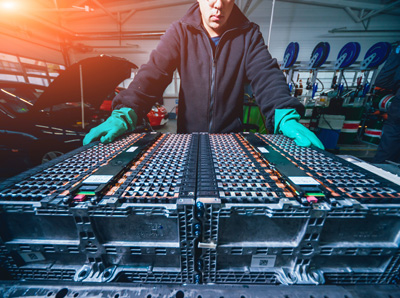The other piece that stood out to me in the report was looking at the 27.45% average supplement delta for EVs and how much of a role that plays in the final cost of the repair compared to the original estimate. When you look at internal combustion engine (ICE) vehicles, that number is around 17%, so you're talking about 10 percentage points higher for an EV. That speaks to how critical OEM repair procedures are with these cars.
What is the main takeaway for repairers and insurers?
It’s important for insurers to look at the original estimate and forecast what the likely reserves will be for that claim and understand that it's probably going to be greater. When it comes to estimate writing, carriers and shops must be able to produce a collision damage appraisal that accounts for the differences between EVs and ICE vehicles. Once the estimate is written, there has to be a way for repairers to prioritize these vehicles and identify the damage quickly because there will be a more significant amount associated with them. The longer the claims process gets drawn out, the worse the customer experience is, which means CSI scores go down for the shop, the insurer and other stakeholders.
If there is a way to pre-scan during the initial estimate and focus on writing the most accurate estimate possible, it is a great way to add additional value to the process and get a better understanding of the systems that have been impacted.
The report states that 90.11% of U.S. and Canadian shops are using OEM parts. What do you attribute this to?
It’s the lack of availability of alternative EV parts. With ICE vehicles, OEM utilization is roughly 68% to 70%. That’s a big difference. There is a lack of cars in the salvage pool that are making it to auto recyclers and I think many are going overseas.
I believe the percentage of OEM parts utilization will change as the salvage pool increases and aftermarket manufacturers produce parts.
Can you share information about the percentage of parts repaired?
We found that the average percentage of parts repaired on EVs increased from 11.05% in Q3 2022 to 12.16% in Q4 2022. This suggests that repair facilities may be improving their capabilities to repair lighter-weight substrates. However, some of this increase may also have to do with ongoing supply chain disruptions and the lack of availability of replacement parts.
Shops are investing in technology, tools and equipment to repair some of these materials more effectively. Some of this is being driven by necessity because of the supply chain issue we're facing and the lack of availability of parts. Some shops are simply just repairing parts because they can't get a replacement.
To read a copy of the report, visit www.mitchell.com/plugged-in.










Stacey Phillips Ronak